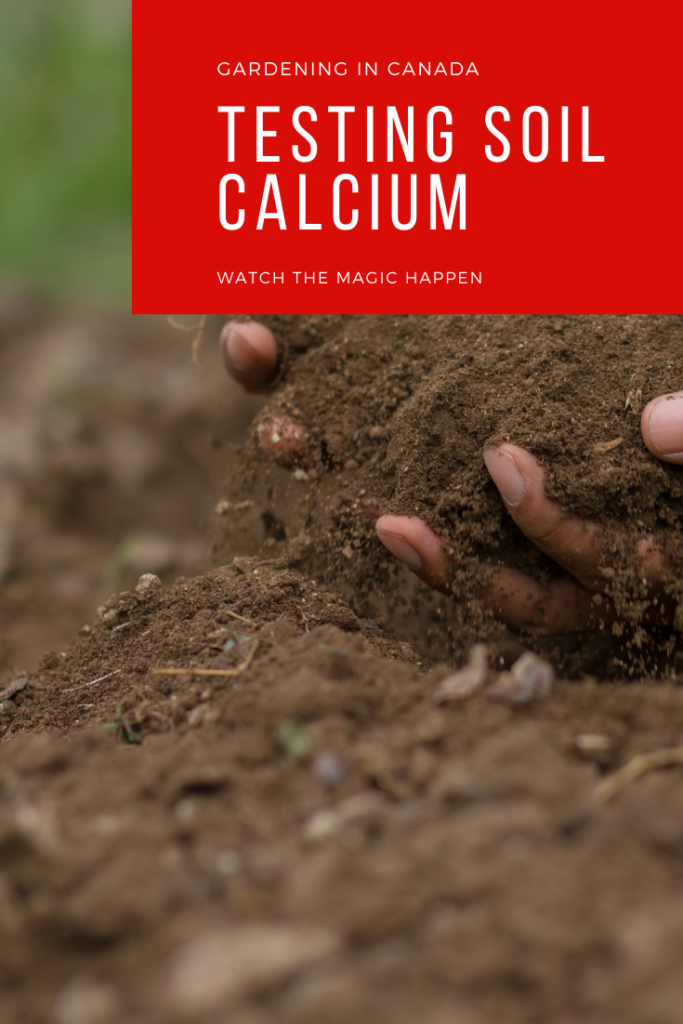- Canada’s Growing Zones Are Changing 2024 - January 12, 2024
- Attracting Wildlife To The Garden - May 16, 2023
- How To Garden Near A Septic Tank - May 9, 2023
Calcareous soils are those that have free calcium carbonate (CaCO3) and have pH values in the range of 7.0 to 8.3. The benefits of calcareous soil are easy to ignore but let’s go through the top reasons it’s important to know the values of calcium carbonate in your soil.
An important step in determining whether or not a garden would gain from a calcareous soil that is high in calcium carbonate is conducting a calcium test on the soil. There is a type of soil known as calcareous soil that contains significant amounts of calcium carbonate and is advantageous to the growth of a variety of plants. This particular kind of soil does have a number of benefits, but there are also some drawbacks that one must take into consideration.
Moisture Retention & Drainage
The ability of calcareous soil to retain moisture is the primary benefit of having calcareous soil. Because calcareous soil is able to absorb and retain moisture more easily than other types of soil, it is an excellent option for gardens that are prone to periods of drought. Additionally, the calcium content of the soil works to improve the structure of the soil, which in turn increases the amount of nutrients that are available to plants. This can be helpful for gardeners who are attempting to cultivate a wide range of plants in their respective gardens.
Calcium-rich clay soils have a chemical structure composed of sheets of molecules held together in layers by ionic forces. This means clay soil that can drain which is very important. This is called flocculation which causes aggregation and ultimately channels.
High Alkalinity
Calcareous soil does, however, come with a few drawbacks that should be considered. The high alkalinity of the material is one of the most significant disadvantages it possesses. The pH of calcareous soil is typically higher than that of other types of soil, which can be detrimental to the growth of certain types of plants. For instance, plants that thrive in acidic soil may not do so well in calcareous soil, and the presence of alkalinity in the soil may also make it more challenging for plants to take in certain nutrients.
Compaction
In addition to this, the management of calcareous soil can be challenging. The soil is typically dense and heavy, which makes it difficult to work with because it restricts your movement. In addition to this, it typically has a lower content of organic matter, which can make it more challenging for plants to obtain the nutrients they require. Last but not least, calcareous soil often has high salt concentrations, which, if not properly managed, can be detrimental to the growth of plants.
Disease Resistance
This is caused mainly by available calcium in the soil. Calcium in plants creates strong cell walls by maintaining skin cohesion, this means the disease is less likely to penetrate the plant’s surface skin layer. And with tomato or berry production it can mean less likelihood of fruits splitting
If your test result comes back positive you know that calcium is abundant in the soil. If you’re showing signs of a calcium deficiency, consider looking into the soil pH which may be the cause for the uptake issue.
Here is how to test for Calcium in your soil:
- Step 1: Collect a soil sample from each horizon and dry it at room temperature for one week.
- Step 2: Remove gravel and large pieces of organic residue from the soil sample
- Step 3: Put 0.13 – 0.19 oz of soil into a bowl and add ten drops of spring water to wet the soil
- Step 4: Use the eyedropper to add white vinegar to the soil sample in increments of ten drops at a time & stir. You are looking for a fizz (evanescence). This does not have to be done quickly the reaction will take place regardless of speed.
- Step 5: Continue adding ten drops and stirring until the fizzing stops or weakens. Be sure to record the total number if drops used.
- Step 6: When the vigorous bubbles become weak after stirring stop adding another ten drops of vinegar and let the mixture stand for five minutes.
- Step 7: Add ten more drops, stir the mixture, and wait for one minute.
- Step 8: If there are only a few bubbles released, stop and sum the number of drops used; if there are still a lot of bubbles, perform steps 4, 5, and 6 again.
In general, it is important for any gardener who is thinking about using or amending calcareous soil in their garden to conduct a calcium test on the soil. Before making a choice about whether or not to use this kind of soil, it is essential to have a thorough understanding of the potential downsides, despite the fact that there are many positive aspects associated with its application. Gardeners are able to ensure that their plants receive all of the nutrients they require while still taking advantage of the benefits that calcareous soil provides if they manage their gardens with care and conduct tests on a regular basis.

